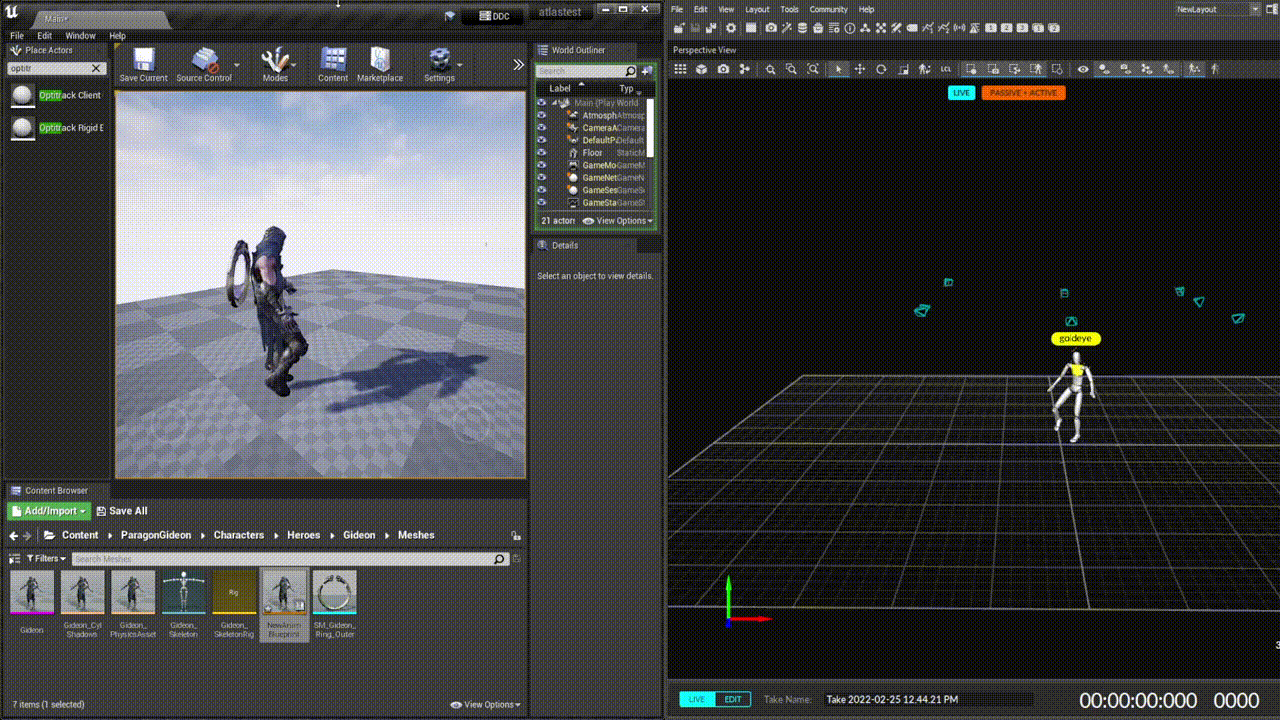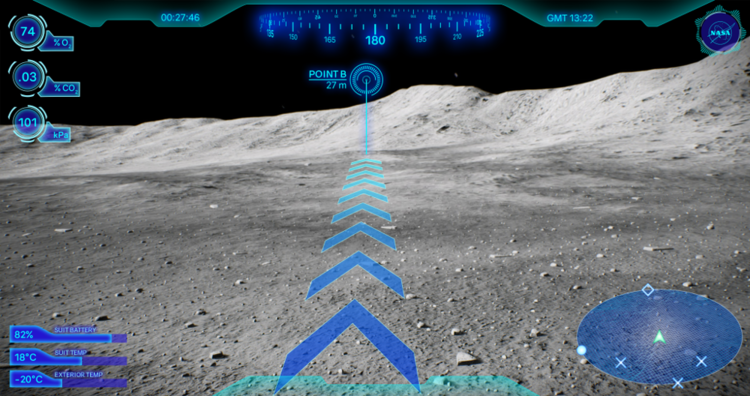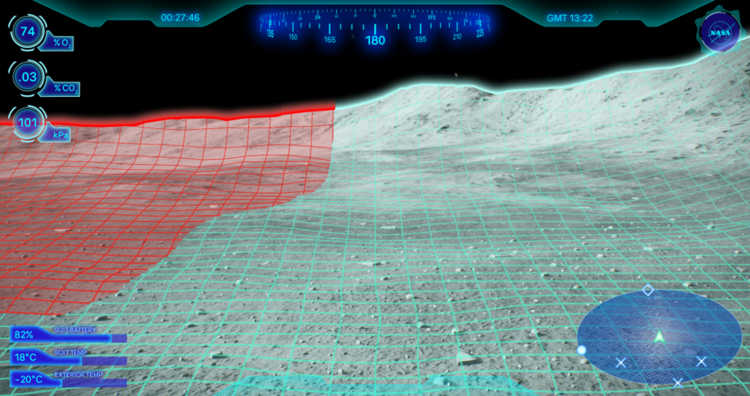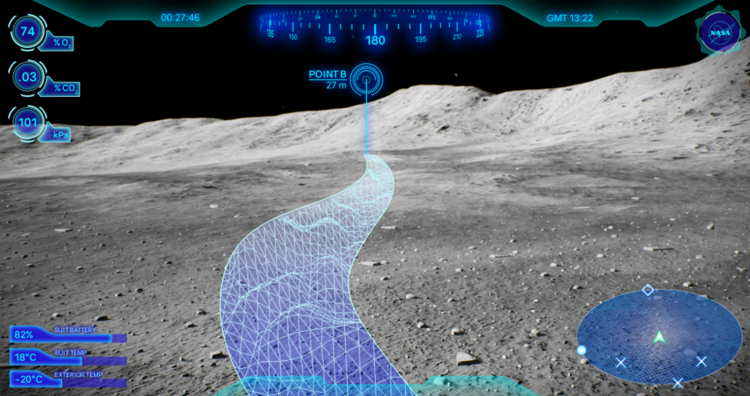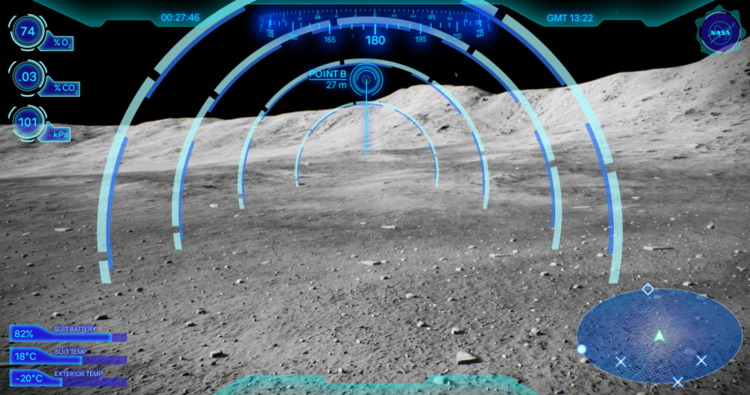GENERATION
LOSS
Hi! My name is Atlas Vernier, and I use they/them pronouns. I’m a technologist, artist, and engineer - and my work primarily falls at the intersection of art and technology. I’m a storyteller at heart, and I’m always seeking new ways to tell stories: from being a D&D dungeon master to immersive art exhibits to training simulations that will help astronauts in space.
What sets me apart is my adaptability, determination, and pure passion for worldbuilding and storytelling. Over my career, I’ve adapted my design approach to numerous styles, including NASA’s technical standards, artistic collaborations across the United States, and multiple international design teams.
Below are some samples of my work, including environmental design, motion capture, virtual reality, and training simulations. These have been tailored towards the Generation Loss application. If you would prefer to see my full portfolio, head to my website’s homepage!
Thank you so much!
— Atlas Vernier
atlas@vt.edu
ENVIRONMENTAL DESIGN
I am currently a 3D modeler and concept designer (and the post production manager!) for an animated TV series that will come out in early 2024.
In this role, I am responsible for creating concept art, designs, and visions that will be used by the artists to create the final animations.
These renders include weather, sky lighting, physical geography, and plant life.
I’m also responsible for transforming storyboards into backgrounds. Below is a storyboard by Maxim, our creative director, accompanied by the render I created.
To make it easier for the artists, I included multiple times of day (different light and shadow angles) and a few different weathers.
I love experimenting with new concepts and bringing ideas to life. This image was an experiment I did to see how Minecraft beacons might look in real life.
My goal was to make it seem as though the light was alive, not simply some static thing. Any block can glow - but beacons hum as though they’re alive!
This render also includes animated water, snow, and
My renders aim to evoke a sense of wonder. What unexplored worlds might exist?
This was created as a concept design for a the TV show I am currently working on. The goal of this was to show the unknown of a new world as one of the central characters explores.
This is a second version of the video above, following feedback from my creative director and art lead.
I am currently researching what plant life and vegetation would best fit this geographical build, as well as working on the mountains.
SIMULATION RENDERS
This model render and animation was designed for construction workers and drivers to be able to understand the impact of roadside construction on night driving. The complete model included construction lights, moving construction trucks, and routing cars different ways through the traffic simulation.
This is Vauquois, a tiny village in the north of France that was destroyed during WWI, erasing a piece of history.
Using technology like photogrammetry, LIDAR point-cloud scans, and Unreal Engine, we were able create a digital restoration of the village, preserving its story and restoring a piece of history.
My team also spoke with the historians at the site. As I am fluent in French, I was responsible for translating the documents, maps, and stories of the people who lived in the village.
MOTION CAPTURE
I am also proficient with using motion capture. This system uses infrared sensors to locate 40-60 (depending on the build) markers located at specific points on the body to indicate joint and extremity movement. Movement can be captured with sub-millimeter precision, with data sent to Unreal Engine for dynamic rendering in real time.
This is ultimately used for immersive experiences with full body movement. This can be applied to simulation and training. A soccer player can be physically, visually, and auditorily immersed in a game day scenario in order to improve their performance on the field. A coach can analyze athlete movements to prevent injuries before they occur. A dancer can create a virtual art piece using their movements through a space.
For my particular use, I work with stunt artists and trained fighters. By tracking their movement (and, in the case of some fighters, their preferred weapons), it’s possible to quickly create a more realistic fight scene in an animated environment.
These particular renders came from an Optitrack motion capture system, though I am experienced with Qualisys motion capture as well.
This motion capture data can be recorded and applied to a human rig in post production. My use case is to link the real-time motion capture data and softwares such as Unreal Engine (pictured above) or Unity to create renders and movement in real time, rather than having to wait on post.
The full human mesh (upper left hand side) is a public asset from the video game Paragon.
SPACE JAM
This project was completed during a two-week intensive program at the Institute for Creativity, Arts, and Technology. Space Jam integrated a multitude of systems, including animated floor projection, spatialized audio, motion capture, and the Cyclorama. These systems were linked together to create a cohesive and immersive experience
Users are immersed into a virtual audio environment. While holding a glowing orb—a planet of their very own—they are able to traverse the solar system to hear the sounds of each planet. Each planet has its own dedicated theme, including key, instrumentation, and arpeggiation. These themes are generated using live data; no matter how long you stay in a planet’s orbit, you will always hear new music!
Click play on the video to see and hear Space Jam in action at our final showcase!
SHACKLETON CRATER HEADS-UP DISPLAY
This project was a NASA project designed to create a tool for astronauts to use on the south pole of the moon, which is currently one of the most promising locations for long-term habitation due to the presence of water beneath the surface. Visibility is terrible on the lunar south pole because of the angle of the sunlight. Our project is a heads-up display (or HUD, for short!) to provide navigation and mission support to an astronaut. I helped design the aesthetic, information display, and the elements of the HUD itself!
This was designed in Unity, with some environment assets designed in Unreal Engine. The HUD was used in virtual reality, with some preliminary augmented reality applications. Unfortunately, the full animated version (and VR version!) is locked behind NASA security.
MARS HABITAT
This was another project completed at NASA Langley Research Center. This is the Mars habitat, which will ultimately be used to train astronauts. The structure itself is largely the same as the lunar habitat, since these habitats are designed to endure the conditions of the moon or Mars.
I was responsible primarily for designing the habitat itself, as well as designing and stocking the medical center. I also created the assets. This project was created in Unreal Engine, with assets created in Autodesk Inventor.
Recently, I’ve been considering returning to this project to integrate motion capture to train doctors to do surgery in variable-environment situations.
Like the Shackleton Crater HUD, the full version of this is locked behind NASA security.
For the sake of brevity, this is not all of my work! This collection has been tailored to the Generation Loss call for animators. My full portfolio can be seen on my website homepage, which is linked below.
Thank you so much for your time and consideration!






